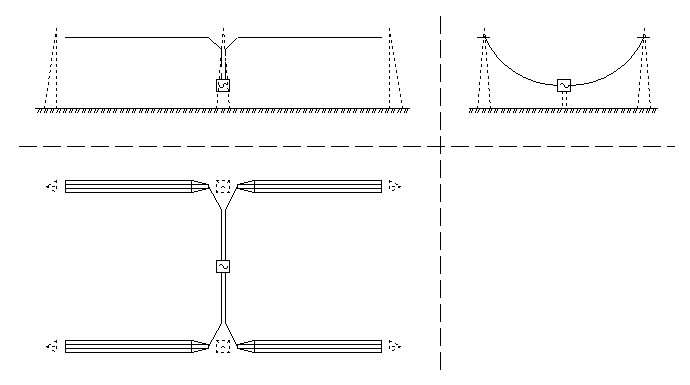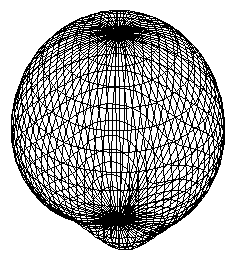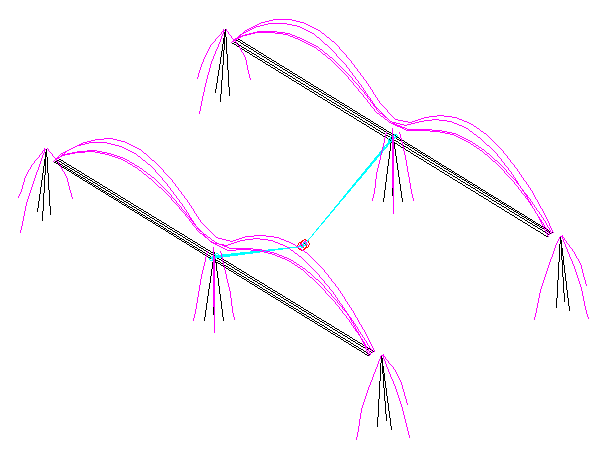
This antenna is not in use since several years, but it's still an interesting antenna and deserves some attention. In order to get a rough idea of the performance of such antenna, it has been simulated and the gain, the radiation pattern, the antenna impedance and the current distribution has been calculated. Precise data about the structure are not available and the dimensions have been estimated via observations on site. No antenna performance data is available and therefore the result of the simulation cannot be checked against the reality and may be considerably wrong, but the figures look plausible and are reported and commented below.
The medium wave antenna of the Sarnen transmitter is an array of two horizontal full wavelength dipoles about half a wavelength apart. Because of the horizontal polarization of the dipoles, the ground wave cannot be excited: this antenna is therefore intended for local broadcast and not for long range transmissions. One should expect a radiation pattern that sends the most of the energy vertically toward the ionosphere that provides a reasonable local coverage at night, when ionosphere reflection occurs in this band. This kind of transmission is often called "near vertical ionospheric reflection" or NVIS. During the day the ionosphere absorbs the majority of the energy and this antenna in not effective. Transmission frequency was 1'566 kHz, one wavelength was 191.6 m and a quarter wavelength is 47.9 m.

The full wavelength dipole is about 180 m long and the two dipoles are about 100 m apart. Because of the full wavelength configuration, the impedance of the feed-point of each dipole is expected to be very high. The feed-point of each dipole is connected to a matching network via a high impedance ladder balanced line. The exact length is not known, but it's longer than λ/4 and shorter than λ/2. It will probably transform the high impedance of the antenna to something lower and easier to match to a standard 50 Ω coaxial line. The two dipoles are fed separately, but to achieve a vertical radiation, both dipoles have to be fed in phase.
Ground conductivity has a very big influence on the gain (the higher the conductivity the higher the gain) and the impedance. The elevation angle of this antenna is expected to be 90° and is not influenced by ground conductivity. Unfortunately no information about ground conductivity is available and it's not known if there are buried radials or not: a value of 6 mS/m has been arbitrary chosen.
The simulation shows a gain of 8.9 dBd (including losses), an elevation angle of 90° and a half power beam-width of 52°. This corresponds to the expectations.

The 90° radiation pattern is very similar to the front radiation pattern and there are almost no side lobes.

The current distribution on the wires corresponds to a full wavelength dipole with a maximum in the middle of each arm and a minimum at the feed-point. The feed impedance of each dipole is (1812 – j457) Ω. Because the precise impedance and length of the ladder feed line are not known, the impedance at the matching network has not been calculated.

The simulation shows that a significant current flow in the towers, especially in the four towers at the four corners, where it's comparable to the current in the dipole wires, but its influence on the antenna performance is small. The antenna has also been simulated without towers: the gain is slightly higher (9.3 dBd), the half power beam-width a little smaller (48°) and the feed impedance is a bit higher (2000 – j223) Ω. The current distribution on the dipoles is almost identical.